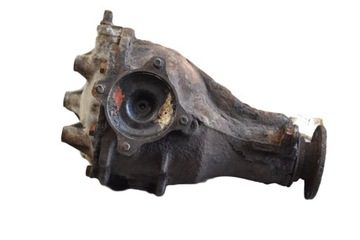
The structure and principle of operation of the pedestrian protection system
Content
Tens of thousands of accidents involving pedestrians occur on Russian roads every year. Such accidents happen both through the fault of the drivers and as a result of the carelessness of people entering the roadway. In order to reduce the number of serious injuries in a collision between a car and a person, automakers have created a special mechanism - an active hood with a pedestrian protection system. What it is, we will tell you in our material.
What is the system
The pedestrian safety system was first installed on production vehicles in Europe in 2011. Today the device is used in many European and American cars. Three large companies are engaged in the production of equipment:
- TRW Holdings Automotive (manufactures a product called the Pedestrian Protection System, PPS).
- Bosch (manufactures Electronic Pedestrian Protection, or EPP).
- Siemens.
Despite the differences in names, all manufacturers produce systems that work according to the same principle: if a collision with a pedestrian cannot be avoided, the protection mechanism works in such a way as to reduce the consequences of an accident for a person.
System purpose
The device is based on an active bonnet with a pedestrian protection system. When a person hits a car, the hood opens slightly by about 15 centimeters, taking on the main body weight. In some cases, the system can be supplemented with pedestrian airbags, which are fired when the hood is opened and soften the impact.
The opening hood increases the distance between the person and the vehicle. As a result, the pedestrian receives much less serious injuries, and in some cases may get off with only minor bruises.
Elements and working principle
The pedestrian protection system consists of three main elements:
- input sensors;
- the control unit;
- executive devices (hood lifters).
Manufacturers install several acceleration sensors on the front of the car bumper. In addition to these, a contact sensor can also be installed. The main task of the devices is to control possible changes during movement. Further, the scheme of work is as follows:
- As soon as the sensors fix a person at a minimum distance from the vehicle, they instantly send a signal to the control unit.
- The control unit, in turn, determines whether there has been a real collision with a pedestrian and whether the hood needs to be opened.
- If an emergency situation really occurred, the actuators immediately come into operation - powerful springs or firing squibs.
The pedestrian safety system can be equipped with its own electronic control unit or, using software, can be integrated into the vehicle's passive safety system. The second option is considered the most effective.
Pedestrian airbag
In order to provide even more effective protection for pedestrians in a collision, airbags can be additionally installed under the hood of the car. They are included in the work at the moment the hood is opened.
For the first time, Volvo has used such devices on its passenger cars.
Unlike the usual driver's airbags, pedestrian airbags deploy from outside. The mechanism is installed in the windshield pillars, as well as directly below it.
When a pedestrian hits a car, the system will work simultaneously with the opening of the hood. The pillows will protect the person from impact and keep the windshield intact.
The pedestrian airbags are deployed when the vehicle speed is between 20 and 50 km / h. Establishing these restrictions, the manufacturers relied on statistical data, according to which the majority of accidents (namely, 75%) with the participation of pedestrians occur in the city at a speed of no more than 40 km / h.
Additional devices
Additional devices, systems and design features can be used to ensure the safety of people who suddenly come out onto the road in front of the car, including:
- soft hood;
- soft bumper;
- increased distance from the engine to the hood;
- frameless brushes;
- a more sloping bonnet and windshield.
All of these solutions will allow a pedestrian to avoid fractures, head injuries and other serious health consequences. The lack of direct contact with the engine and windshield allows you to get off with fright and light bruises.
Sometimes the driver cannot anticipate the appearance of a pedestrian on the carriageway. If a person suddenly appears in front of the car, the braking system does not have time to stop the vehicle. The further fate of not only the victim, but also the motorist may depend on the degree of harm caused to the health of the pedestrian. Therefore, when choosing a car, it is important to pay attention not only to the presence of safety systems for the driver and passengers, but also mechanisms that reduce injuries in a collision with a person.

